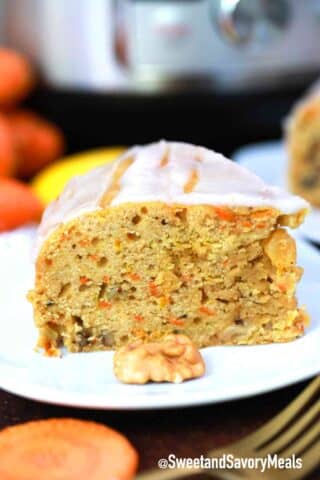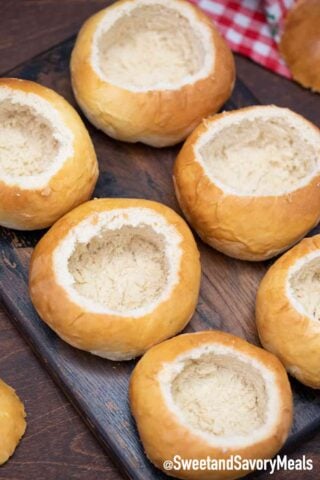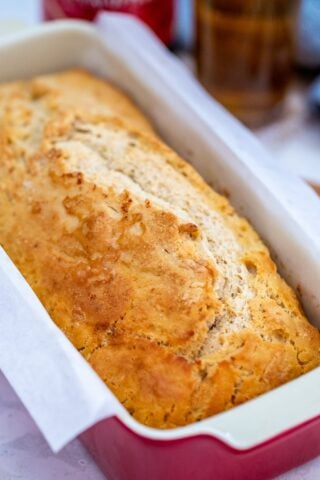Amish White Bread
Have you ever been afraid of trying your hand at making bread? Well, those days should be long gone after you try my recipe for Amish White Bread. It is soft and fluffy, and I made sure to make it as easy as possible, using just a few ingredients and no hand-kneading involved! That’s a winner, I say!
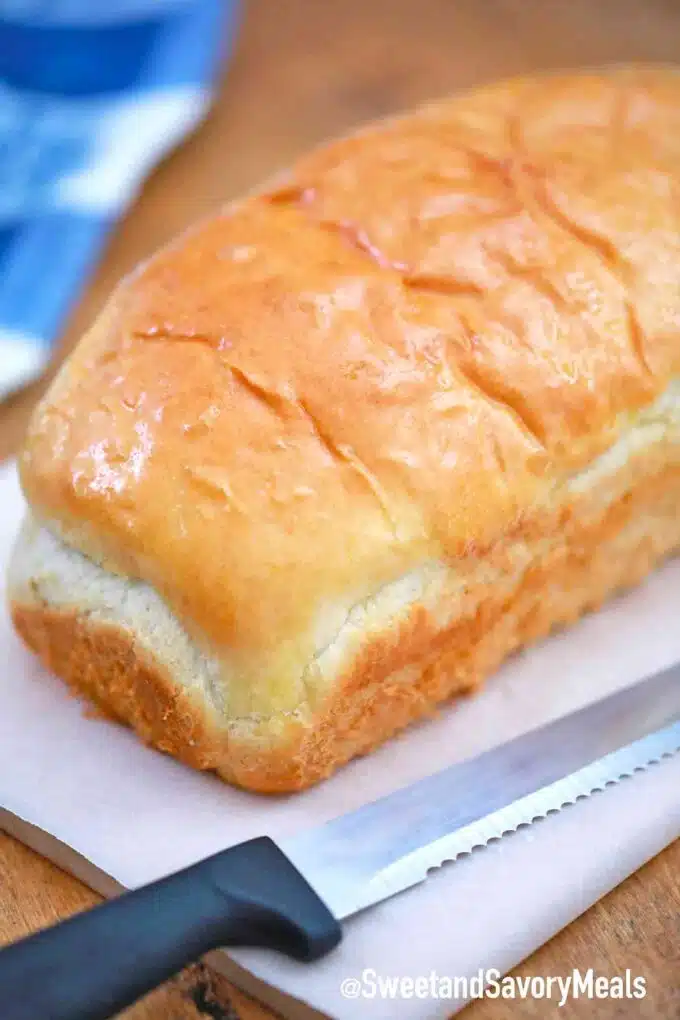
With my step-by-step instructions, anyone can make homemade bread and be proud to show it off. This lightly sweet and chewy bread is perfect for sandwiches, French toast, butter bread, or soaking up gravy when eating stew or roast. I like to serve it when I make this Dr. Pepper pot roast.
Table of contents
My Amish bread recipe is the best bread recipe to use for first-timers or those who don’t consider themselves good at baking. The recipe is so easy and practically foolproof, and the end result is a light white loaf with a hint of sweetness.
Why you will love this recipe
- Because it is so easy: This is probably the easiest bread recipe I have on my blog besides quick bread. As long as the steps are followed, there is no way to mess it up.
- No hand kneading necessary: The mixer does all the work. Just proof the yeast and pour everything into the mixer. It will do the kneading. Then, the only thing left to do is wait for it to rise and bake it.
- Just a few ingredients: My recipe has four ingredients and one of them is optional. These are ingredients I always have in my kitchen and most people already do too.
- Better than the best bakery: Following my recipe, this bread is better than anything at the store or the bakery. I promise. Cut a slice after it gets out of the oven and eat it without butter or anything and you will see what I mean.
What you’ll need to make Amish white bread
Ingredients
- Bread flour – I prefer to use bread flour because it is higher in gluten for a chewier texture I love about this bread.
- Instant yeast – One package of ¼ ounce instant yeast or 2 ¼ teaspoons.I always use Fleischmann’s RapidRise.
- White granulated sugar – I use white sugar for this recipe because not only does it help activate the yeast, but it also adds delicious taste and moisture to the bread. It also helps the dough expand to make a softer and airier crumb.
- Vegetable oil – Oil helps the bread stay fresh longer, coats proteins to prevent them from making the bread tough, and makes it rise better.
- Melted butter – I like to brush melted butter on top after it bakes to add a delicious rich buttery taste.
- Salt
- Water
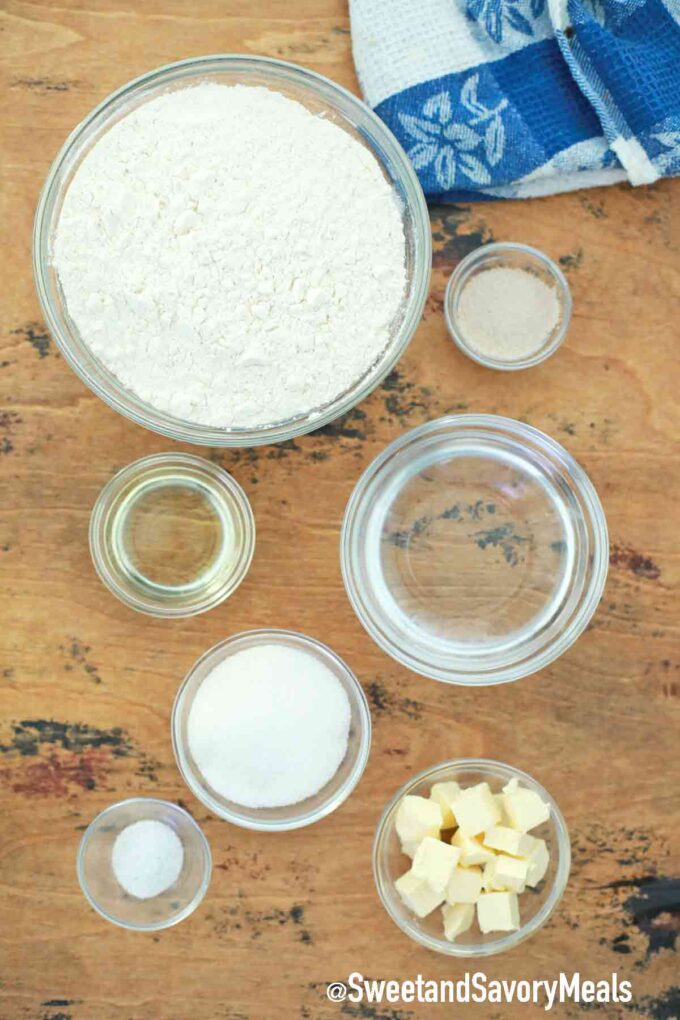
How to make
Making bread has never been easier; just a bit of patience, and you will soon bake your first perfect loaf!
- Proof the yeast: First, I stir the warm water, sugar, and yeast in a small bowl, letting it sit for 10 minutes until it is foamy.
- Knead the dough: I add the oil, salt, and flour to the bowl of my stand mixer fitted with a dough hook. Then, I slowly add the yeast mixture, kneading on medium speed until the dough no longer sticks to the sides of the bowl. This should take about 10 minutes.
- Let it rise: Now, I roll it into a ball and put it into a greased bowl, covering it loosely with a clean kitchen towel. I let it rise in a warm, dark place for 60 to 90 minutes or until it doubles in size.
- Shape it: Then, I put it on a floured surface, deflate it, and shape it into a log to fit into a greased loaf pan. I cover it loosely with a towel and let it rise for another 60 minutes until it doubles again.
- Bake the bread: Preheating the oven to 350 degrees F about 20 minutes before the time is up, I bake the bread for 25 to 30 minutes, or until it is golden brown.
- Butter and cool: After, I brush the top with melted butter and let it cool for 10 minutes in the pan before removing it and letting it cool on a cooling rack.
Expert tips for the perfect loaf
My most important tip for successfully executing this recipe is NOT to overmix the dough. When it gets to the point where it pulls away from the sides of the bowl, it should be done. But check it with the windowpane test.
And another essential step is to let the rise. Some of the best places to let it rise are on top of the fridge, in the oven with the light on, or on top of the water heater. To test that it has sufficiently risen, push a finger into it. The dent should not fill back in. If it does, give it more time. Then, punch it down before letting it rise again.
More tips to consider:
- Always proof the yeast first. This means putting it in a bowl and adding the water and sugar. Stir and let it sit for 10 minutes. If it is foamy, it is fine. If not, get some different yeast because that is dead.
- When adding it to the yeast, the water should be 110 degrees F to 115 degrees F. Do not let it go over 120 degrees F, or it could kill the yeast.
- Also, use a dough hook attachment to stretch the gluten properly. The bowl size should be large enough to hold the amount of dough that is being made.
- Homemade bread gets stale more quickly than commercial bread, so plan on eating or freezing within 2 days.
- Be sure to place the dough in a greased bowl, so it will not stick.
- The kitchen should be above 80 degrees F for the best rising time.
- Also, make sure it does not get overbaked. The internal temperature of the bread should be 200 degrees F when finished. No thermometer? Tap the bottom of the loaf. If it sounds hollow, it is done.
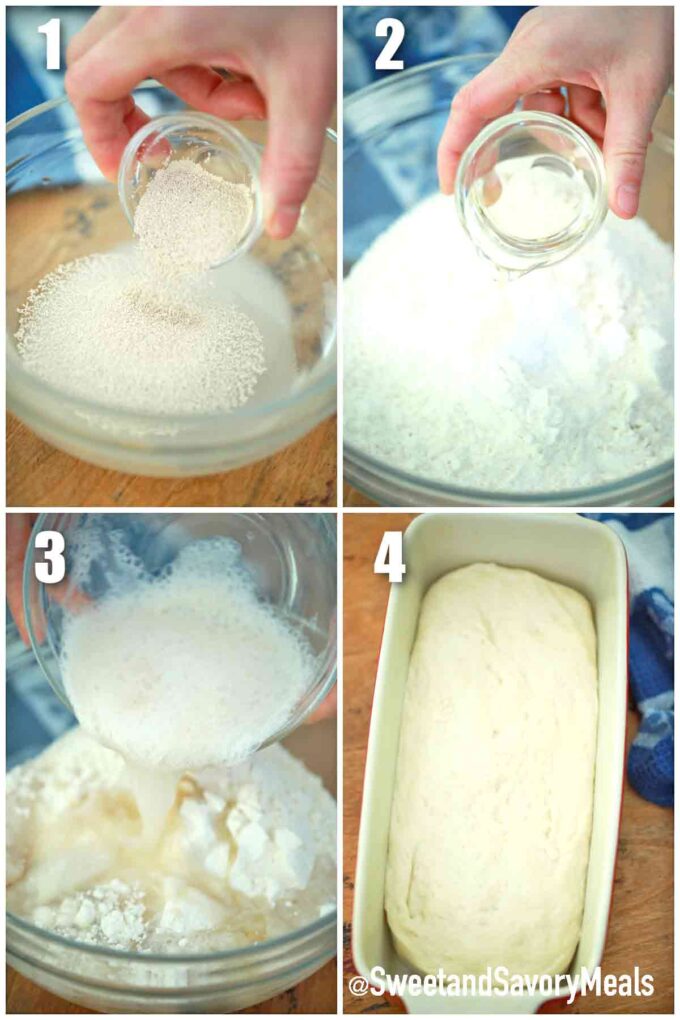
Recipe variations and add-ins:
- Whole wheat: Substitute half of the white flour with whole wheat for a healthier and more chewy loaf.
- Cinnamon raisin bread: I sometimes add a tablespoon of cinnamon and a half cup of raisins for a sweeter loaf.
- Brown sugar bread: Make this Amish bread richer and moister by using brown sugar instead of white.
- Hot bread: I chop up some jalapenos and add some red pepper flakes to make a spicy loaf of bread especially for my husband.
- Add herbs: To make this bread taste unique, add herbs to match the meal such as basil, oregano, parsley, and sage for Italian food or thyme, rosemary, marjoram, and basil for Greek food.
Serving suggestions:
- This makes scrumptious French toast. In fact, the kids love it when I use it for baked French toast sticks.
- It is the perfect white sandwich bread for making peanut butter and jelly sandwiches.
- I also like to use it to make delicious hot sandwiches like this Monte Cristo grilled cheese sandwich.
- Also, I often serve it with soup and stew to soak up the extra juices. It is perfect for any savory dish.
- My creamy avocado egg salad is also incredible on this homemade bread. The light and creamy spread is packed with protein and flavor.
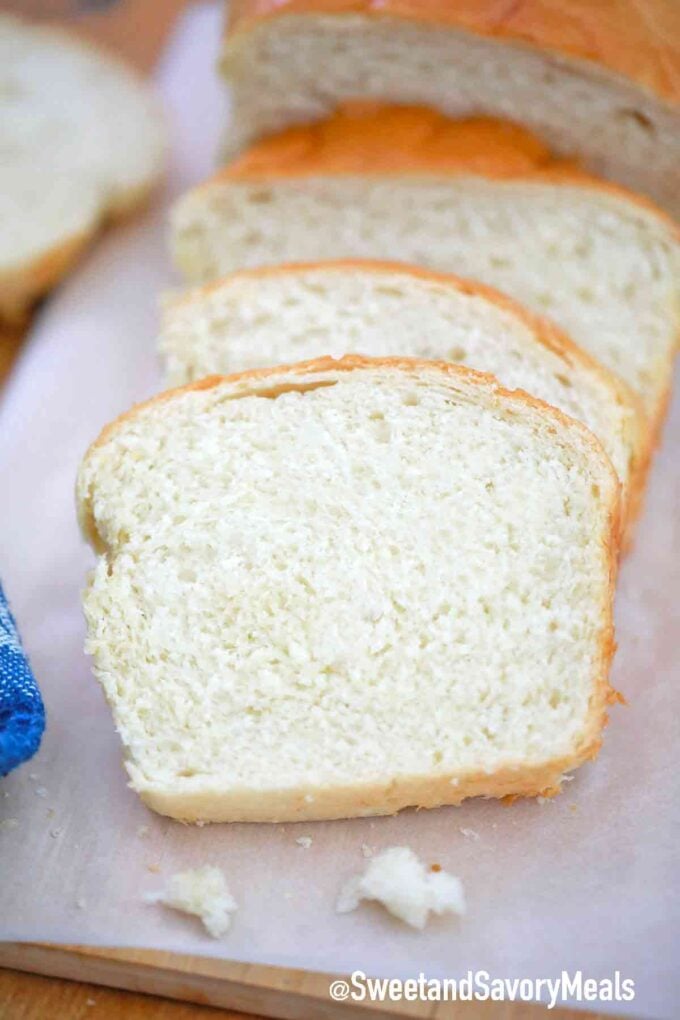
How to store leftovers:
- Refrigerate: Leftovers can be stored at room temperature in an airtight container for four to five days. unsliced. Refrigerated, it can be stored for up to a week.
- Freezing: To freeze, I slice it before storing it in a freezer-safe container with parchment paper between each piece. It will stay fresh for up to six months.
- Defrost: Remember to thaw overnight in the fridge before serving for the best results and serve at room temperature.
Frequently asked questions
It could be that the house is too cold. Turn up the heat. It may also be that the water killed the yeast. Make sure it is about 110 to 115 degrees F. It should not go over 120 degrees F. It can also go dormant if the water is too cold. Using too much or too little sugar can also cause a problem. Follow the recipe exactly. The yeast may be expired too but that should not be an issue if you proof it.
Although it is uncommon, it could be that there is not enough flour. Check the recipe and the measuring tools used. Maybe it is that there are too much wet ingredients. Either way, adding more flour a tablespoon at a time, should solve that problem. Kneading too much can also make the dough too sticky. Kneading is good but too much is not better. Use the correct kind of flour. Bread flour or all-purpose flour are the only ones to use. Do not use cake or pastry flour for bread.
This can be caused by using too much yeast. Be sure to only use one packet or 2 ¼ teaspoons of instant yeast. Letting it rise too long or having too much dough in the pan can also cause this issue. Not kneading it long enough may also be the cause of cracks, bumps, and lumps. Use the windowpane test to tell if the dough is ready. Also, be sure the oven is preheated before putting the bread in to bake.
A heavy or dense loaf of Amish bread may be caused by using dead yeast or not mixing the ingredients well enough. It can also be a problem if the room temperature is not warm enough during rising time. This will cause the dough not to rise enough. Other common causes are not having enough gluten from using the wrong flour or not kneading the dough long enough.
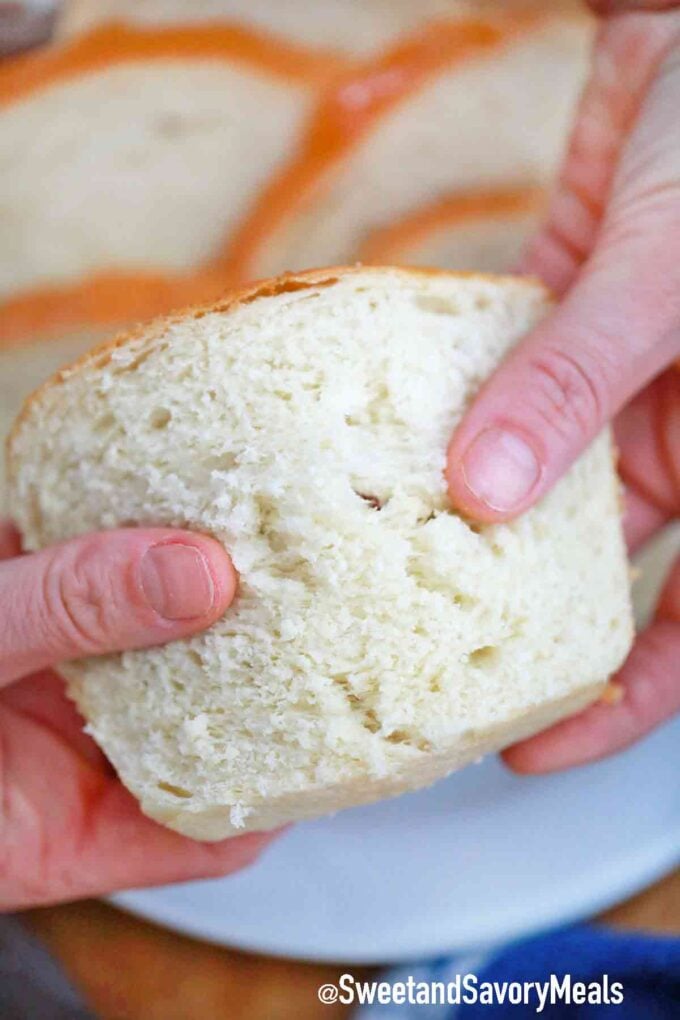
More bread recipes:
Another quick and easy recipe to try is this Irish Soda Bread made with raisins and eggs. If you are a chocolate lover, try this Chocolate Banana Bread instead.
Loved this recipe? I’d love to hear from you! 💛 Leave a 5-star rating ⭐️ in the recipe card below and share your thoughts in the comments – I read and appreciate every single one!
Let’s stay connected! Follow me on Facebook, Instagram, Pinterest, and YouTube for more delicious, sweet and savory recipes. Have a question? Ask in the comments, and I’ll be happy to help! 😊 with love Catalina!
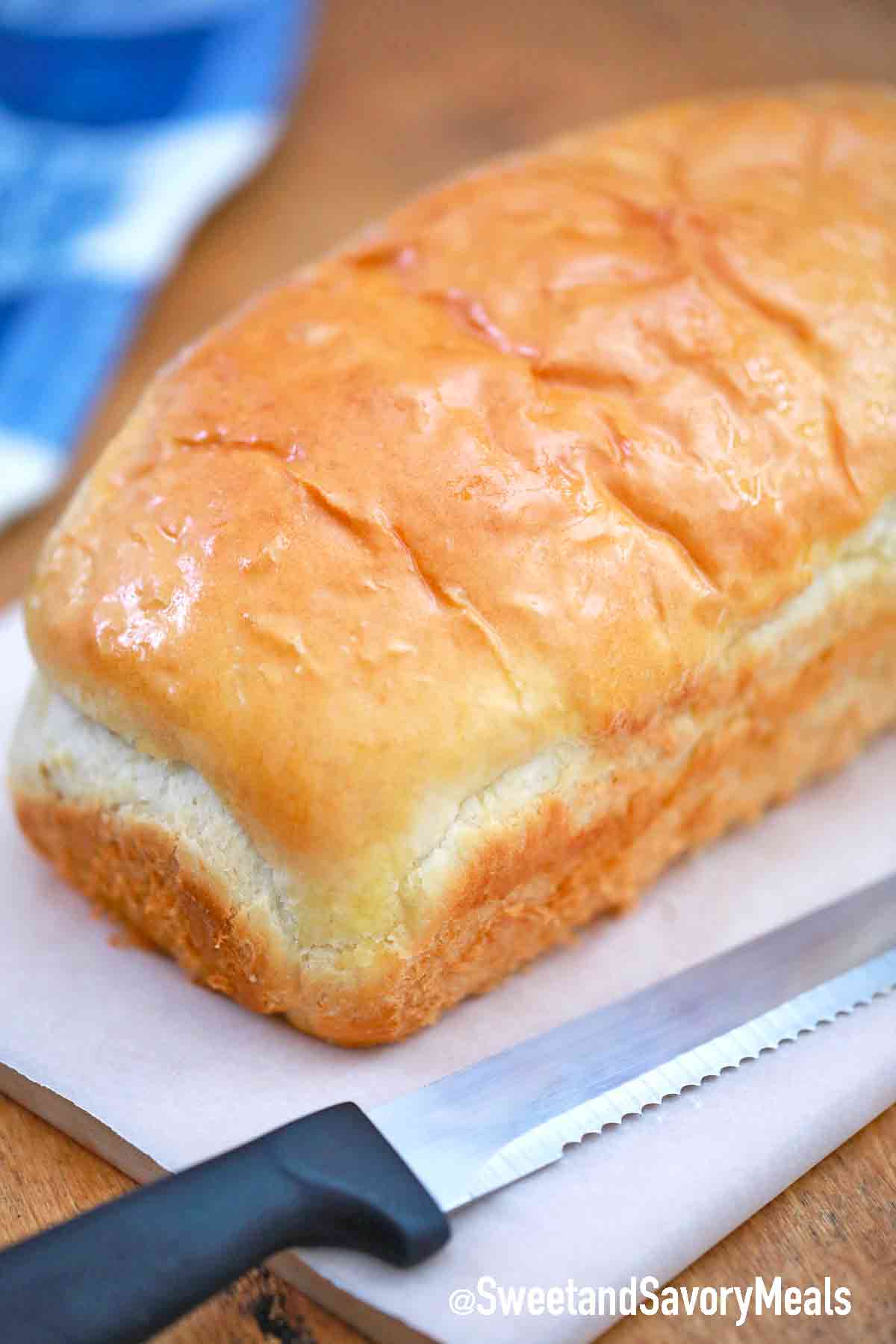
Amish White Bread
Ingredients
- 1 cup warm water 110-120 degrees F
- 1/3 cups granulated sugar
- 1 packet instant yeast or 2 ¼ teaspoons
- 3 cups all-purpose flour
- 1 teaspoons salt
- 2 tablespoons vegetable oil
- 2 tablespoons unsalted butter melted
Instructions
- In a small bowl, stir together the warm water, sugar, and yeast. Let the mixture sit for 10 minutes until it is foamy.
- Add the flour, salt, and oil to the bowl of a stand mixer fitted with the dough hook attachment.
- Add the yeast mixture slowly. At medium speed, knead until the dough no longer sticks to the sides of the bowl for about 10 minutes.
- Roll into a tight ball and transfer to a lightly greased bowl. Cover loosely with plastic wrap or a clean kitchen towel, and let rise in a dark, warm place for 60 to 90 minutes until doubled in size.
- Place on a lightly floured surface, deflate, and shape into a log to fit in a 9×5 loaf pan.
- Cover loosely with plastic wrap or a clean kitchen towel and let rise in a dark, warm place for 50 to 60 minutes until doubled in size.
- Preheat the oven to 350 degrees F about 20 minutes before the second rise is done.
- Bake for 25 to 30 minutes or until golden brown.
- Brush the crust with melted butter and let it cool in the pan for 10 minutes. Then, remove the bread from the pan and transfer it to a cooling rack to cool completely.


